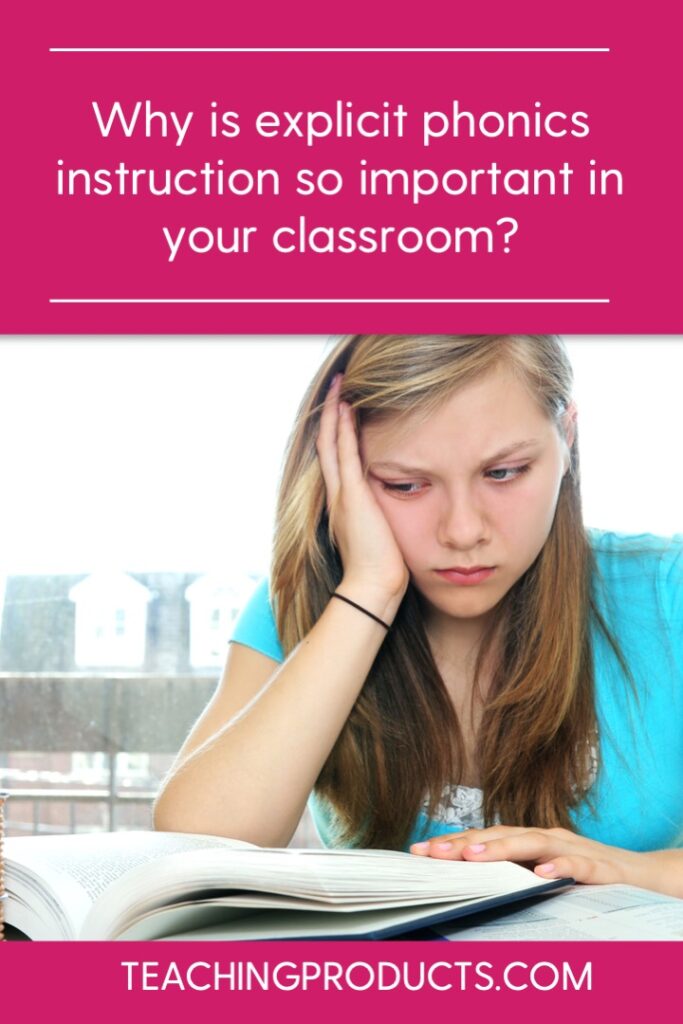In this post, I’ll be sharing an overview of the science of reading and the importance of explicit phonics instruction.
This content may contain affiliate links. Please read my disclosure policy to learn more about this.
What is Reading?
Reading means being able to extract meaning from printed words. We read to get the message – for example, following a recipe. But, in a literate society, reading provides much more. A successful reader has access to other people’s thoughts, opinions, memories, theories, experiences, and feelings. Reading is a life-changing experience. However, it is a “biologically unnatural” process that humans have only been doing for a short time in evolutionary terms. In contrast to learning spoken language, children must be taught the English writing system and how to master the code for both reading and spelling.
What’s the Code?
Written English is considered a code because letters and letter combinations (graphemes) represent spoken speech sounds (phonemes). The English alphabet consists of 26 letters that represent 44 different speech sounds. This means that some letter combinations (graphemes) are made up of more than one letter. In the first sound of “this,” for example, two letters, “t” and “h,” form one grapheme that represents the phoneme “th”.
Explicit Phonics Instruction
Connecting graphemes to their corresponding phonemes is not an intuitive or natural process for beginning readers. It is best to learn the code through explicit and systematic phonics instruction. This entails teaching children to directly associate graphemes with their corresponding phonemes by using a systemic approach that follows a clearly defined sequence of letters with explicit phonics instruction. Begin by introducing a few sounds (single letters) from the simple code. Progressively move into the complex code (the more complicated graphemes such as ‘ng’ and ‘ough’) once children have mastered the simple code.
Children are taught to segment and blend words once they have mastered a few grapheme-phoneme correspondences. At this stage, children will begin to read short decodable books. Decoding skills are essential for children to read unfamiliar words such as place names, or nonsense words.
And There It Is!
Well, not quite. This is just a brief introduction to explicit phonics instruction that aligns with the science of reading. When I first heard about the science of reading, I was pretty excited. Everything I read resonated with me and my observations of how my students were learning to read. You can read more about my initial response to the science of reading here.
Why So Excited?
When my son started school, he was the victim of a balanced literacy approach. He was taught strategies like memorising words or using pictures to make sense of the text. At the end of his first year of school, he was well behind his peers in both reading and writing. We changed to a new school that offered more structured support and we started to see progress. His school placed him into an intervention program that used a synthetic phonics approach. And his progress soared. This is what I knew was missing in the way we teach reading.
What Next?
If your school is looking to embrace the science of reading, chances are they’re reviewing different structured synthetic phonics programs (SSPPs). The key here is ensuring the program used is evidence-based. Ideally, this needs to be used at the whole-class level (Tier 1), as well as in small group (Tier 2) or individual intervention sessions (Tier 3). Evidence-based synthetic phonics programs are carefully designed to align with the current research into how children learn to read by using explicit phonics instruction. This website has a list of recommended SSPPs used in Australian schools.
Have you embraced the science of reading yet? Leave a comment below to let me know!




